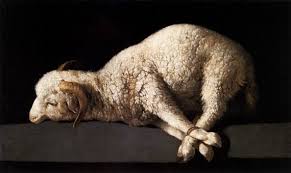A burning bush? Parting the sea? Plagues? Moses’ story is
made for Hollywood, isn’t it? (The only thing it is missing is zombies. Zombies
would have made it perfect).
Back when we got TV signals on huge antennae and only had 3
channels, a yearly, 2-night showing of “The Ten Commandments” was a big event. When Moses (played by
the late Charlton Heston) took his staff and it turned into a snake and ate all
the other snakes it freaked me out. I was terrified when the angel of death
drifted through ancient Egypt in the form of a fog. My favorite part, though,
was the talking, burning bush. Even at age 8, I thought it was kind of funny
and littlegoofy that God almighty came to visit Moses as a piece of
shrubbery that was on fire.
Rabbis say that what was most
remarkable about the burning bush was not that God spoke through it but that Moses stopped at all. A bush on fire
would not have been an unusual thing the desert. Something made Moses go and look. Even more remarkable is that fact
that when a voice says to him, “Moses!” he doesn’t run away in terror (like I
probably would). He responds with “Here I am!”
“Here I am” (in
Hebrew it is pronounced “hey-na-knee”) shows up over and over in some of the
big stories and scenes of the Torah. People like David, Solomon, Jessie, and
others are called out to by God and every time they answer, “Here I am!” God
calls out, and they respond. Our story with God, then, is that God has constantly
been calling out to humanity. The “heroes” of scripture also did stuff like
part seas, kill giants and build temples, but what was most heroic about them was that they stopped answered God’s call
with a “hey-na-knee.”
Like Moses and our Fathers and Mothers who came before us, we
too are invited to answer God’s call in our lives with a “Here I am” and a life of spent pursuing and working for
what is of ultimate worth. In Jesus, though,
we also see God’s desire to be a part of us by becoming one of us and continuing to
live among us and within us. Our
story with God continues, and even in stories of burning bushes and parting
seas we can see that God finds us of
ultimate worth and is saying to us at all times and all places, “Here I am.”

